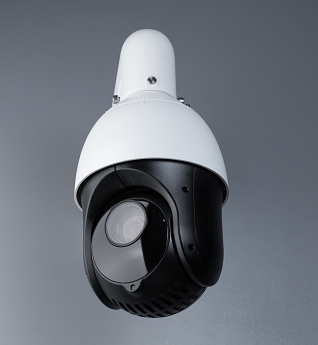Digital Surveillance
The properties of digital communication.
It is not an easy task to specify what we mean when we say “surveillance”. As a first approximation, David Lyon defines surveillance as “the focused, systematic, and routine attention to personal data for purposes of influence, management, protection, or direction.” This definition attempts to convey how surveillance has historically functioned as a necessary aspect of maintaining modern society,1 for example, by separating citizens from non-citizens, the sick from the healthy, the wealthy from the poor. credit risks. He then immediately goes on to point out that surveillance is often not focused, systematic, or routine at all, for example, in the case of network surveillance that captures information from everyone's digital communication without any evidence of its effectiveness. What are we to make of surveillance in the digital age, where the capture and processing of personal information by powerful actors is not just routine but ubiquitous? Increasingly, surveillance does not appear to be an activity undertaken for simple "influence, management, protection, or direction" but appears to be much more, constituting the core security strategy of many nation-states and the core business model for surveillance companies. largest internet. credit card companies and advertisers.
Most surveillance historians would probably agree with Lyon's assertion that "digital devices only enhance surveillance capabilities or sometimes help foster certain types of surveillance or help alter its character." 2 However, it is worth asking what precisely makes “digital” different, and how this transformation in the scale and character of surveillance could represent something substantially new.
Perfect digital copy
A good analogy for the key difference between analog and digital communication is comparing speech to the printed word. Without modern audio equipment, it is difficult for a human being to reproduce speech exactly, but it is very easy to reproduce written words. Like written words, digital information is encoded into discrete, reproducible components. Because of this, digital information is always copied perfectly, unlike analog communication, where data was transmitted via imprecise and ephemeral voltage or frequency levels. More specifically, digital information can only be copied. You can't move digital information from one place to another without making a perfect copy. The copy operation frequently fails, but the process is always audited for errors and repeated until the copy is perfected.
Lots of capture points.
When communication is digital, surveillance is at the very center. Because every possible step in the transmission and reception of digital communication results in a perfect copy, the information at each step is exposed for easy capture. As we transition to all communications being digital, we are moving into a world with an explosion in potential surveillance capture sites. At the same time, the relatively centralized nature of the Internet's backbone makes it possible to monitor most of the world's traffic from a few key locations. 3 Furthermore, the rapidly falling cost of sensors to convert real-world inputs into digital signals has resulted in a proliferation of these sensors in our environment, from our consumer devices to agriculture to sensor networks designed to improve life. urban.
Data immortality
Although your personal device may fail, information stored on servers in digital formats lives forever. Physical storage media often have short lifespans, but information is almost always stored in duplicate, so when one physical device begins to fail, information is automatically mirrored to another storage device. Error correction protocols ensure that this endless copying never results in an imperfect copy. As the amount of storage available per dollar continues to grow exponentially, there's often no need to throw anything away, even for very large data sets.
Automation
The capture, storage, and analysis of digital information are largely automated, not subject to the constraints of available human labor. The former East German secret police employed as many as two million informants, 4 but today it would only take a handful of off-the-shelf network monitoring devices, placed in key locations, to far exceed the reach of the Stasi. The result of this automation is that both state intelligence services and Internet companies that monetize user information have adopted the general approach of capturing everything, when practical, with the idea that the data can be useful in the future. future.
To be sure, there are limits to the amount of information that can be effectively captured and analyzed. However, these limits have been pushed back faster and further than most observers expected, as both nation-states and private companies have invested heavily in ways to store and process more data.
high confidentiality
In the past, when surveillance was labor intensive and available only at a few specific sites in the communication process, it was possible to establish a legal framework that adequately sanctioned and controlled the when, where, who and why of state surveillance. Digital communication has destroyed this in two ways: first, the barriers to entry for capturing information for surveillance are very low; and second, the only way to prevent almost everyone from doing it is to encrypt the data, but this also prevents state-sanctioned surveillance. Data is largely vulnerable to surveillance by a variety of actors, many of them nefarious, or is secure, encrypted, and eludes state control. In practice, of course, this is still not entirely true, because most security products are deeply flawed and state actors and determined criminal organizations can bypass these systems. However, the poor quality of existing security products is rapidly changing, as more people realize the level of surveillance in their lives and seek greater security.
